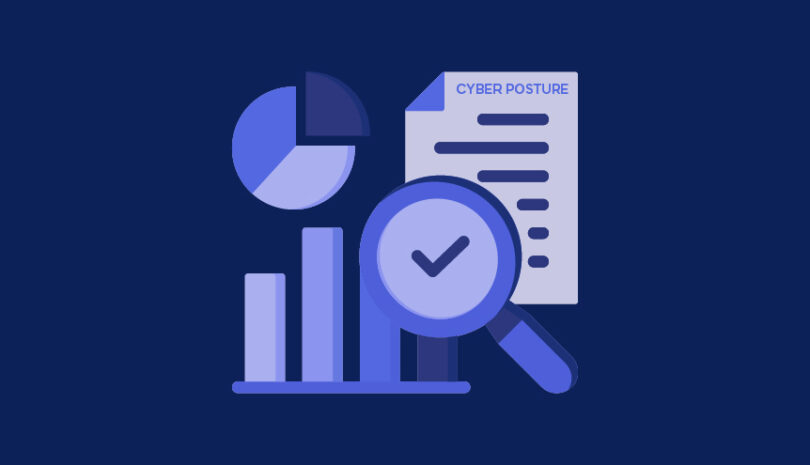A security risk assessment (SRA) is designed to help you evaluate risk and maintain compliance with regulatory requirements.
In most businesses, security should be a top priority. A security risk assessment is a continual evaluation of the risks and vulnerabilities attackers could use to exploit your network and gain unauthorized access to systems and data. It includes a comprehensive check of your organization’s infrastructure, server and system analysis, network, applications, information security, company policies, and third-party security. All your business processes, technologies, and business operations have inherent security risks, and it’s your responsibility to make sure those risks are both understood and accounted for in your business’s operation. In some cases, you may be legally required to formally evaluate these security risks and adhere to certain standards to minimize them.
Security Risk Assessments: The Basics
Let’s start with a high-level overview of how a security risk assessment works. Generally, a security auditor will take responsibility for conducting the security assessment itself; this may be a person or a team of people and may operate within the company or as a third party reviewing the company. In any case, the auditor will conduct a thorough review of the risk levels of your entire business, including things like how you manage employee passwords, how you collect payment information from customers, and even internal processes you use for communication.
The auditor will compile a list of potential security gaps and associated vulnerabilities in addition to the current controls in place to mitigate those vulnerabilities. They will also be responsible for recommending a risk assessment process to better mitigate those identified risks further.
Note that a security risk assessment may also be called something slightly different, like an IT infrastructure risk assessment, a security audit or a security risk audit, or simply a more in-depth vulnerability assessment.
Security Risk Assessment Trends in 2025
As cybersecurity threats evolve, security risk assessments must keep pace with new technologies, regulatory changes, and emerging attack vectors. Here are the key trends shaping security risk assessments in 2025:
AI-Driven Risk Assessments
Artificial intelligence (AI) and machine learning (ML) are revolutionizing security risk assessments by automating threat detection, predicting vulnerabilities, and identifying unusual activity in real time. AI-driven assessments reduce human error and provide deeper insights into security posture, enabling organizations to respond to risks faster and more accurately.
Zero Trust Risk Assessment Integration
The Zero Trust security model is becoming a standard approach, requiring organizations to verify every user and device attempting to access their network. Security risk assessments in 2025 will increasingly focus on evaluating Zero Trust frameworks, ensuring organizations enforce least-privilege access, micro-segmentation, and continuous authentication.
Regulatory Compliance Becomes More Complex
With data protection regulations tightening worldwide, security risk assessments must align with evolving compliance requirements. Industries subject to HIPAA, GDPR, DORA, and other frameworks must assess security risks related to third-party vendors, data storage, and cloud services to avoid costly fines and breaches.
Continuous & Automated Risk Monitoring is Becoming Standard
Traditional periodic risk assessments are no longer enough. Organizations are shifting to continuous security risk assessments that use automation to monitor real-time threats, detect anomalies, and assess vulnerabilities dynamically. This shift allows for faster incident response and a proactive cybersecurity strategy.
Integrating Cloud Security & Multi-Cloud Risk Assessments
As organizations move towards hybrid and multi-cloud environments, cloud security risk assessments are critical. Businesses must evaluate data access controls, misconfigurations, and cloud security posture management (CSPM) to protect sensitive assets across multiple cloud platforms while ensuring compliance with industry standards.
Cyber Risk Assessments as a Business Priority
Security risk assessments are no longer just an IT concern—they are a boardroom priority. Organizations now recognize cyber risk as a core business risk that impacts financial stability, reputation, and operations. As a result, security risk assessments are being integrated into enterprise risk management (ERM) frameworks, ensuring that cybersecurity is a fundamental part of strategic decision-making.
Security Risk Assessments: The 5 Main Types
Each of the different types of risk assessments provides insight into any threats occurring in your company’s technology infrastructure, data security and systems and the security requirements needed to minimize these threats.
1) Physical security risk assessment
Physical security assessments evaluate the ability of malicious or unauthorized physical access to your network and systems. They are mandatory for companies that need to meet compliance standards.
These assessments include checking the security of the entrances to the building and each department, access to physical assets such as the server room, and verifying whether security cameras are monitoring other sensitive locations.
Although most of these types of security assessments focus on day-to-day risks and threats, it’s important to also assess risk in the event of a terrorist attack or natural disaster.
2) Insider threat risk assessment
Insider threat risk assessments identify vulnerabilities that can be exploited by individuals within an organization. Insider threats have risen by 44% over the last two years, with each incident costing businesses more than $15 billion. These potential threats are far more common than external threats and occur due to unauthorized access to networks and operating systems. This can expose users’ personal health information and sensitive information from your business and lead to other information security risks. While insider threats result from both employee negligence and intentional malicious threat actors, more than half are a result of the former. An example is when a default password from the vendor is used instead of being changed to one that is more secure. These types of careless errors can also expose your IT infrastructure to advanced persistent threats (APT) from nation-state actors or other sponsored groups.
3) IT security risk assessment
IT security vulnerability assessments are another critical part of your company’s information security management program and are also required for companies that must meet various compliance regulations. These assessments focus on identifying threats and vulnerabilities in your company’s systems and networks. This includes malicious threat actor access to sensitive data such as user’s personal health information and unauthorized access to IT infrastructure such as server operating systems and other information security risks.
4) Data security risk assessment
Data security assessments identify and evaluate the types of security controls your organization has in place to secure your company data. These information security management controls can include zero trust or least privilege network access, network segmentation, and identity management processes. Once potential risks are identified, your business can put new controls into place as needed.
5) Application security risk assessment
An application security risk assessment identifies potential threats at any point from the source code through the access of users and third parties. These security risk assessments are evaluated using white, grey, and black-box testing in addition to firewall testing. Identifying any security threats in your applications enables your business to minimize threats and improve its cybersecurity posture.
The Security Risk Assessment Process
Ongoing monitoring is critical for successful risk analysis and mitigation. Continuous security risk assessment identifies threats and vulnerabilities in your organization using these five main steps:
1) Identify and map your assets
It is critical for your organization to conduct asset inventory in order to know what critical assets exist and how important they are to your business operations. This asset inventory includes not only hardware but applications, users, and data storage containers since these critical assets all contribute to your external attack surface.
After identifying critical assets, they should be assigned a value, and data flows should be mapped so that your business can better understand critical assets, how they integrate with third-party services and how to meet regulatory requirements such as the Health Insurance Portability and Accountability Act (HIPAA) compliance. Your business should assess data flows for third parties as well, whether it provides infrastructure as a service (IaaS), platform as a service (PaaS), or software as a service (SaaS) to its customers.
2) Analyze and prioritize the risks
Each asset should be evaluated for the threats and vulnerabilities it poses to your business.
At this point, each vulnerability or threat can be prioritized according to the amount of threat it poses to your business operations. You’ll need this information to continuously update your budget for the appropriate remediation efforts.
3) Implement security controls
Security controls can be physical, technical or administrative. Each one helps minimize threats to your business organization and contributes to your remediation efforts differently, according to its specific function.
4) Document results
Risk assessment reports are an effective method of visually communicating risk to senior management and security professionals. Risk analysis templates, for example, compare the likelihood of different attacks with their potential for damage.
5) Develop a plan for mitigation in the event of an attack
After running a cost-benefit analysis against all threats and vulnerabilities, your business can determine the cost of remediation against the likelihood of an attack and take the appropriate security measures.
Systems Included in a Security Risk Assessment
Different parties may organize their security risk assessments differently, but many will include a more in-depth assessment in the following areas for compliance requirements, at a minimum:
- Infrastructure analysis. This area will examine your company’s infrastructure, including the physical security of your building. For example, do you have a consistent supply of power and backup power supplies in event of an emergency? What about cameras and alarm systems to protect against a physical break-in?
- Server and system analysis. In this area, you’ll analyze your servers and internal systems, like your server’s redundancy, the antivirus or anti-malware systems you use and your identity and authentication systems.
- Network analysis. You’ll also need a network analysis, which will help you analyze your internal and external networks, your firewalls, your SPAM filters and more.
- Application scanning. Application scanning will examine your internal and external web applications, identify application vulnerabilities and more.
- Information security analysis. If you’re storing data, you’ll need to examine how your data is classified, how it’s encrypted, and how access to these data is granted.
- Company policies. Many company policies will also be subject to examination, including your IT policies (such as a BYOD policy), your disaster recovery plans, your business continuity plans and even your ongoing risk management approaches.
- Third-party security analysis. Not only will you need to check all of the above for your own company; you will need to check them for all of the third parties to which your company is connected. The reason for this is third-party risk management is because by sharing data and connecting to third parties, their security becomes your company’s issue as well.
The Benefits of a Security Risk Assessment
Security risk analysis carries several benefits, including:
- Identifying areas of weakness. A security risk assessment will help you uncover areas of weakness in your business across many different systems. Given the time and insight, you’ll have ample opportunities to account for these weaknesses and address them.
- Maintaining compliance. Certain industries and types of businesses are required to comply with certain regulatory requirements with regard to privacy or security. A security risk assessment is necessary in these cases, to ensure you remain in compliance.
- Preventing damage. For many businesses, the biggest benefit is the opportunity to prevent potential damage. If you notice a security flaw before it’s exploited, you could prevent a data breach from happening, saving your company thousands or even millions of dollars in the process.
- Staying up-to-date. Security standards are always changing, and your business’s technologies and processes are likely changing as well. Conducting security risk assessments regularly allows you to keep up with these forms of evolution.
Security Risk Assessments and Security Risk Management
Security risk management and security risk assessments are similar but aren’t the same thing. It’s best to think of these concepts this way; a security risk assessment is a snapshot of your current top security policies and practices, meant to help you understand the weak points of those practices so you can take corrective actions and improve upon them. By contrast, security risk management is a series of ongoing strategies and practices to minimize risks.
An adequately protected business will need both an initial security risk assessment and a risk management strategy to succeed. Without a security risk assessment, you may not understand where or how to execute your security risk management strategy, and without a comprehensive security risk management strategy, all the takeaways you got from your security risk assessment will be practically useless to mitigate ongoing security threats.
The Security Risk Assessment Model
There are several different methodologies for approaching a security risk assessment. Generally, the enterprise risk management profile process will begin with a discussion of goals, expectations and the process moving forward. By the end of the risk management process, you’ll be presented with a thorough report, full of findings, conclusions and recommendations for how to move forward. This should be the case regardless of whether you conduct the risk assessment internally or whether you hire a third party to assist you.
In the meantime, you’ll go through three phases within the security risk assessment process:
- Identification. First, you’ll identify the key areas that require examination. Which systems, processes, or technologies are you going to review during this process?
- Gap Analysis and Prioritization. Next, you’ll do the grunt work of analyzing these areas for potential risks and weaknesses. Are there any bad employee habits or flawed processes that could leave your company vulnerable? Are there any exploits available in your current technological setup? Are your third parties on par with your security policy? It’s important then to prioritize the risks to build a strategy and work plan execution to close the gaps.
- Remediation. After that, your security risk assessment team will work to mitigate the number of security risks you face. Recommendations here could include modifying an existing policy, replacing older technology with a newer one or even working with the vendor to close their security gaps.
Why Do I Need a Security Risk Assessment?
Cybersecurity risk assessment is the practice of assessing the level of risk posed by cybersecurity incidents to the IT systems and networks of your entire organization. In short, it helps companies determine where they stand in terms of cybersecurity preparedness. You might think of it as a way to understand what vulnerabilities exist within your network, what kinds of attacks are possible, and how much damage those attacks could cause.
In addition, your organization may have security requirements that require a security assessment. For example, if your company is a healthcare organization, you would be required to complete a HIPAA security risk assessment.
How Do You Prepare for a Security Risk Assessment?
You should take several preliminary steps prior to conducting a security risk assessment (SRA). These include identifying the purpose, scope, and goal of the assessment; determining what standards you will use as a benchmark; selecting a qualified third party to perform the assessment; and setting a realistic timeframe for a complete in-depth assessment.
Who Is Responsible For Security Risks?
Every single member of your organization needs to understand what their role is in terms of security risks. This includes everyone from the CEO down to the receptionist. Everyone has a part to play in keeping your organization secure from potential threats.Are you interested in a security risk assessment, or are you looking to learn more? Contact us today for a free consultation, or sign up for a free demo of our security risk management process and software.
Security Risk Assessment FAQs
-
A security risk assessment includes 5 main steps:
- Identify and map your assets – Take inventory of the critical assets that exist in your network and infrastructure and evaluate their importance to your business operations.
- Analyze and prioritize the risks – Prioritize threats and vulnerabilities according to the amount of threat it poses to your business operations.
- Implement security controls – Minimize threats to your business operations through the use of physical, technical, or administrative security controls.
- Document results – Risk assessment reports communicate the risk to senior management and other security professionals.
- Develop a plan for mitigation in the event of an attack – Your organization will need to have a remediation plan in place that takes in account the amount of risk and your security budget.
-
There are five main types of security risk assessments:
- Physical security risk assessment
- Insider threat risk assessment
- IT security risk assessment
- Data security risk assessment
- Application security risk assessment
-
A security risk assessment is an ongoing activity that helps your business identify any threats or vulnerabilities it faces and meet and maintain compliance regulations. After the assessment, managers and security professionals can take the steps necessary to implement better security controls and give specific recommendations for a remediation plan in the event of an attack.
-
All businesses need to conduct ongoing security risk assessments to understand how prepared they are in the event of a cybersecurity attack. Organizations that are required to meet compliance standards, such as HIPAA, must also conduct a security risk assessment.
This post was originally published on August 30, 2022 but has been updated to include fresh content.



